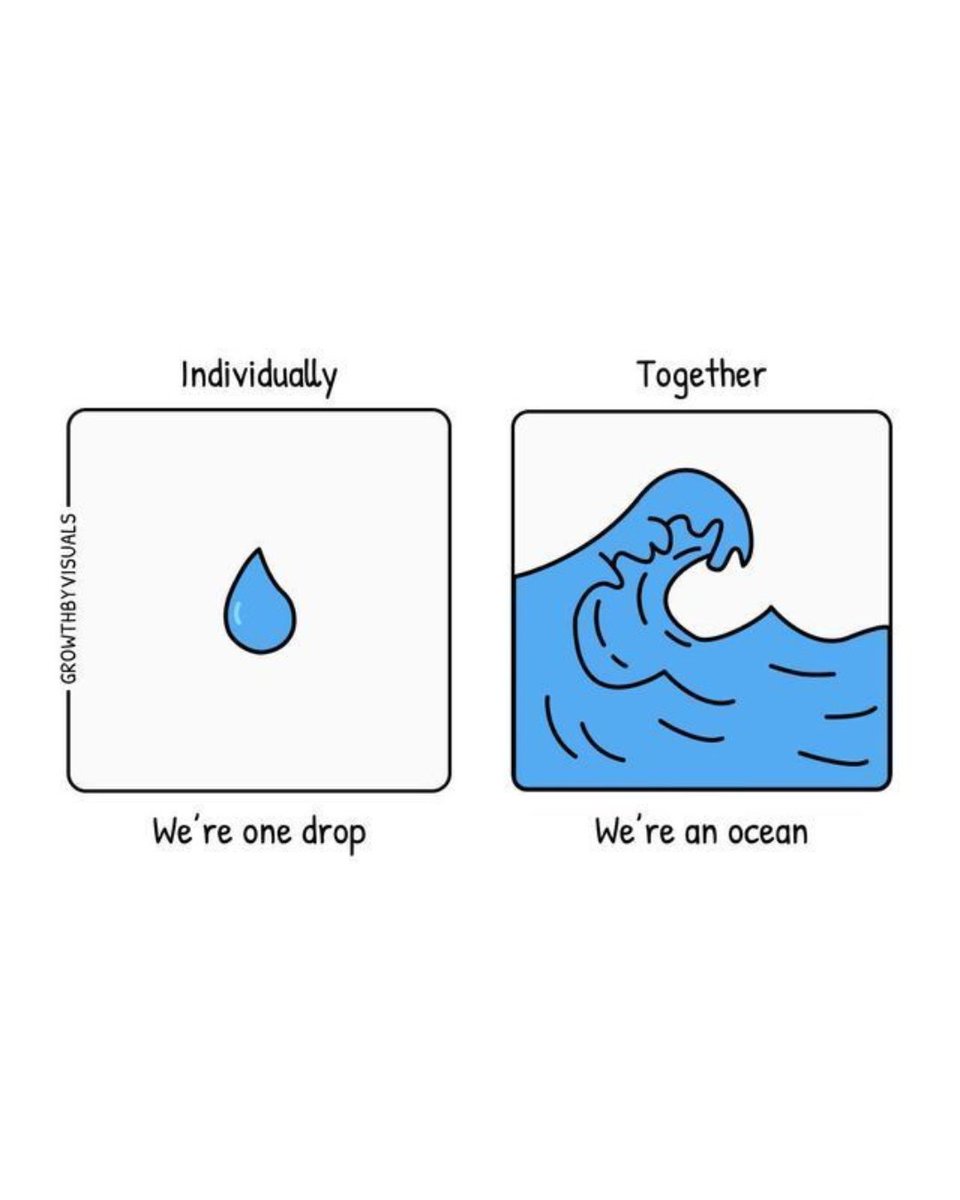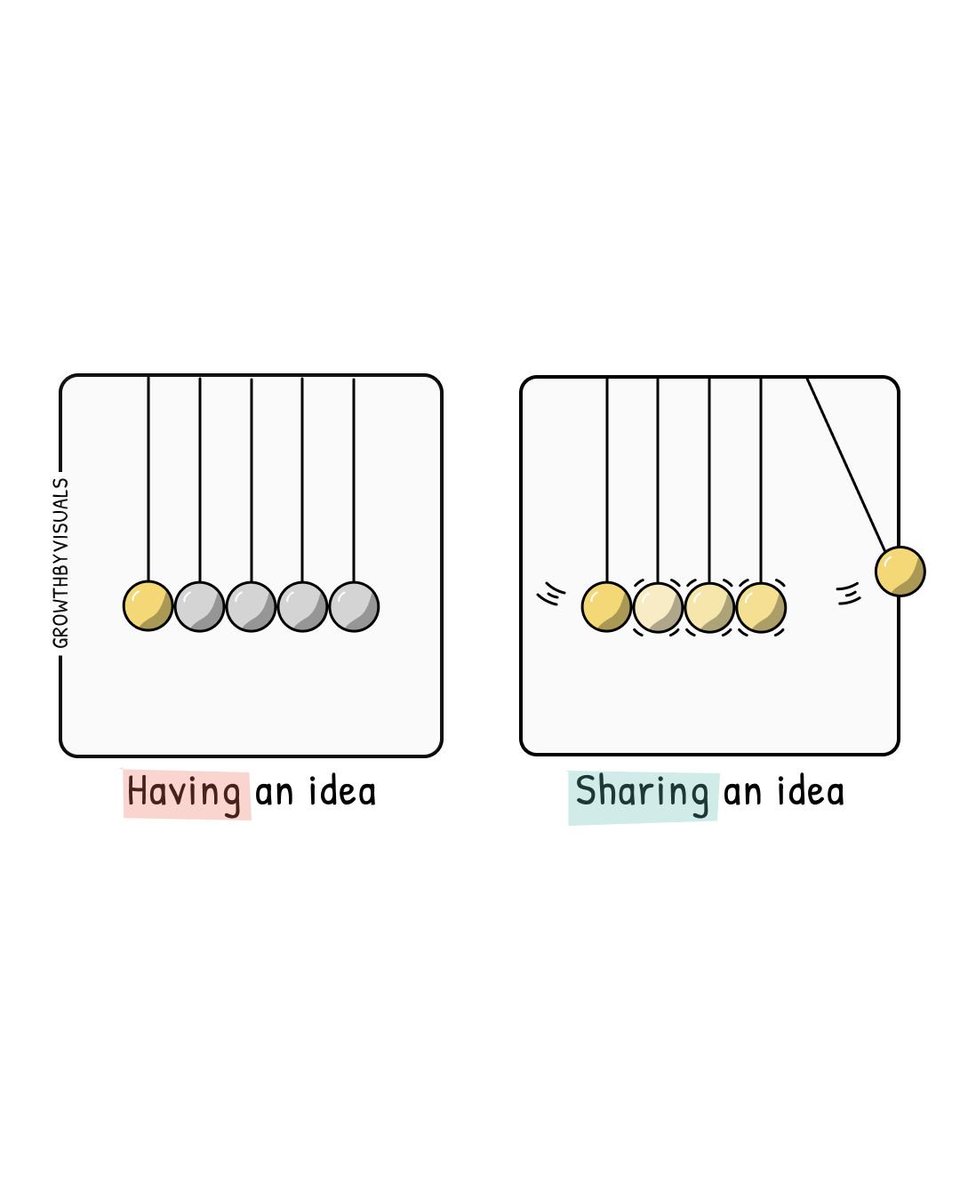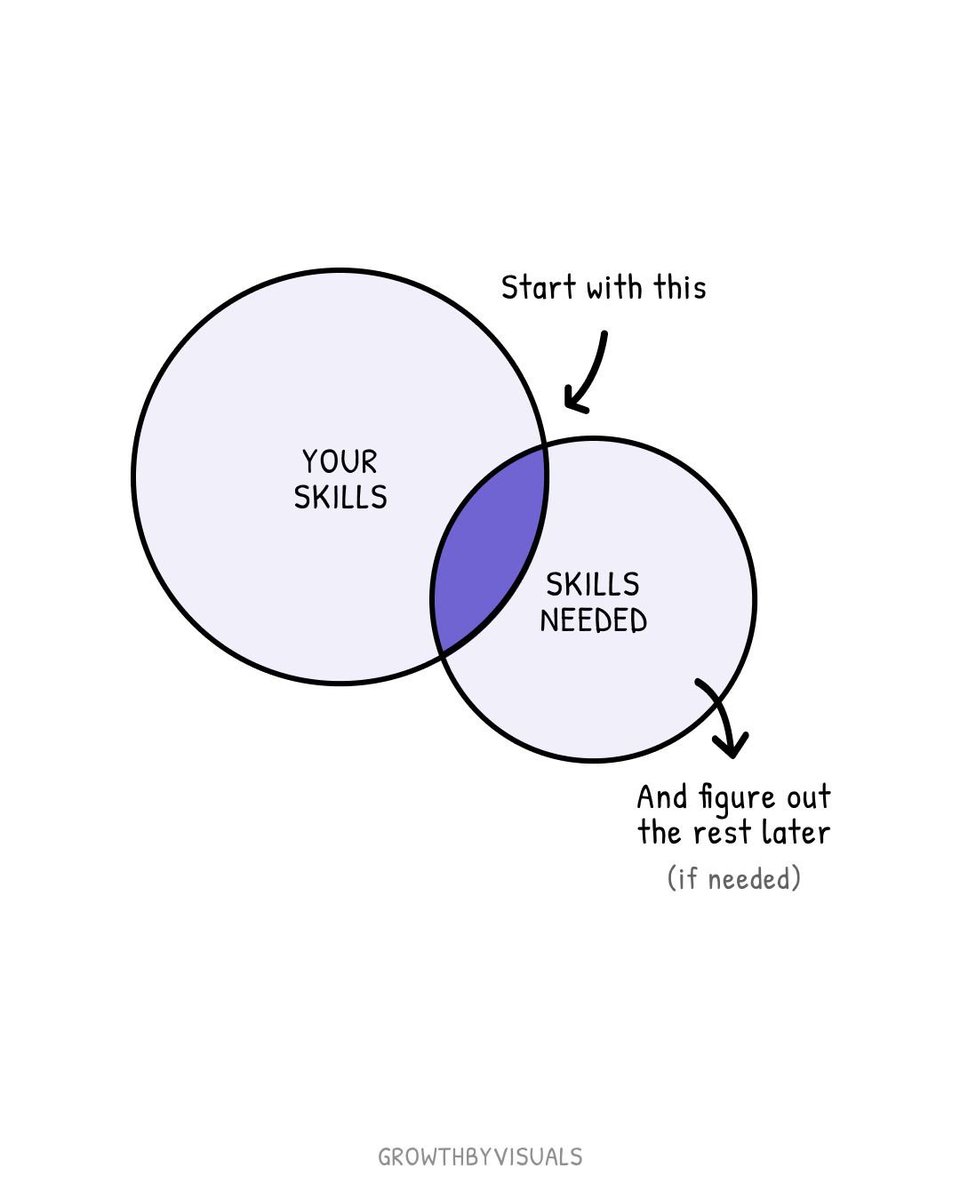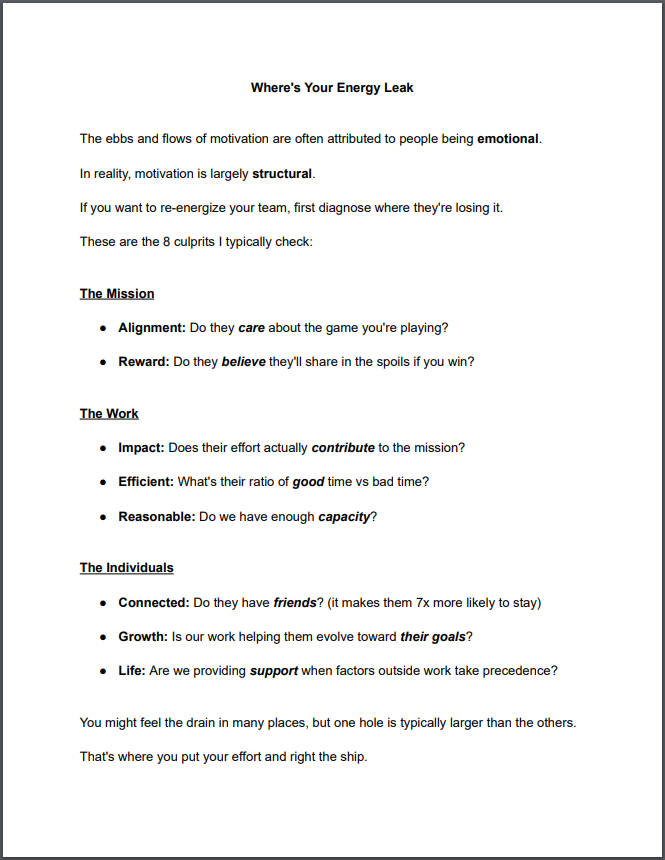After 25 years of building teams, I've learned:
Individual mindset shapes collective success.
How average teams become unstoppable forces:
1. Doubt Is Erased by Doing
↳ Teams hesitate because they overthink
↳ Start messy, iterate quickly, win consistently
Individual mindset shapes collective success.
How average teams become unstoppable forces:
1. Doubt Is Erased by Doing
↳ Teams hesitate because they overthink
↳ Start messy, iterate quickly, win consistently

2. Success Comes Slowly, Then All At Once
↳ Great teams look like overnight successes
↳ But they're usually many thankless years in the making
↳ Great teams look like overnight successes
↳ But they're usually many thankless years in the making

3. Indecision Fuels Fear, Action Erases It
↳ Waiting for perfect clarity paralyzes teams
↳ Action creates momentum, momentum creates impact
↳ Waiting for perfect clarity paralyzes teams
↳ Action creates momentum, momentum creates impact

4. People Only Remember How You Made Them Feel
↳ Results matter less than relationships
↳ Build trust and connection, performance follows
↳ Results matter less than relationships
↳ Build trust and connection, performance follows

5. We Are More Powerful Collectively Than Individually
↳ 1+0 always equals 1
↳ But sometimes, we can make 1+1=3
↳ 1+0 always equals 1
↳ But sometimes, we can make 1+1=3

6. Whether You Think You Can or Can't, You're Right
↳ Team belief becomes team reality
↳ Culture is just shared conviction out into action
↳ Team belief becomes team reality
↳ Culture is just shared conviction out into action

7. Ideas Become More Valuable When You Share Them
↳ Hoarders lose, collaborators win
↳ Ideas without execution are just wishful thinking
↳ Hoarders lose, collaborators win
↳ Ideas without execution are just wishful thinking

8. If You're 100% Qualified, Aim Higher
↳ Complacency slowly suffocates great teams
↳ Growth happens at the edges of ability
↳ Complacency slowly suffocates great teams
↳ Growth happens at the edges of ability

9. Progress Is Never A Straight Line
↳ Expect setbacks, celebrate rebounds
↳ Resilience is a team sport
↳ Expect setbacks, celebrate rebounds
↳ Resilience is a team sport

10. Ideas In Your Mind Aren't As Clear As You Believe
↳ Overinvest in defining and aligning on excellence
↳ What's obvious to you is invisible to others
↳ Overinvest in defining and aligning on excellence
↳ What's obvious to you is invisible to others

11. Effortless Masters Begins as Woeful Beginners
↳ Excellence is earned through awkward starts
↳ Give everyone space for learning and growth
↳ Excellence is earned through awkward starts
↳ Give everyone space for learning and growth

12. No One Sees the Effort, Only the Outcome
↳ Behind every win are countless sacrifices
↳ Build daily habits that quietly compound
↳ Behind every win are countless sacrifices
↳ Build daily habits that quietly compound

13. You Can Be a Masterpiece And a Work In Progress
↳ Perfect teams don't exist
↳ But teams that persist become unforgettable
↳ Perfect teams don't exist
↳ But teams that persist become unforgettable

What more visuals like this in your feed?
Make sure to follow @hiddedouna for more.
Want more leadership insights?
Give me a follow @dklineii as well.
And please RT your favorite!
Make sure to follow @hiddedouna for more.
Want more leadership insights?
Give me a follow @dklineii as well.
And please RT your favorite!
• • •
Missing some Tweet in this thread? You can try to
force a refresh








